Tara Anne Cronin is an artist and writer focusing on photography, works on paper, installation and book-arts. She received a BA in Writing from New School University, an MFA from the ICP-Bard Program, and has Twice-earned the ICP Director’s Fellowship Award.
Tara holds various co-patents with partner and scientist Ed Chen, one of which is a unique polymer made from materials used in her artwork, which, after scientific research, demonstrated itself to be the first synthetic membrane to effectively remove CO2 from air and convert it into useful materials. This resulted in a solo show in the Museo de la Ciudad in Querétaro, Mexico in 2012, and a guest-speaker and exhibition invitation at the American Association for the Advancement of Science in Washington DC.
Having exhibited throughout New York City, North America, and internationally, recent exhibitions also include a six-person exhibition in 2016, “The Curator,” with PDN at Foley Gallery in New York, NY, and at HMOCA in Hilo, HI, in 2017. She was a guest-speaker in 2016 at the School of Visual Arts in NY, NY.
Tara and Ed took on the oldest Organically Certified Kona coffee farm in 2015 to apply their agricultural technology and she is now a coffee roaster and farmer as well. She is on the board of directors of the Society for Kona’s Education and Art.
Tara is nomadic, oscillating between New York and New Jersey, and primarily in Hawaii in the United States.
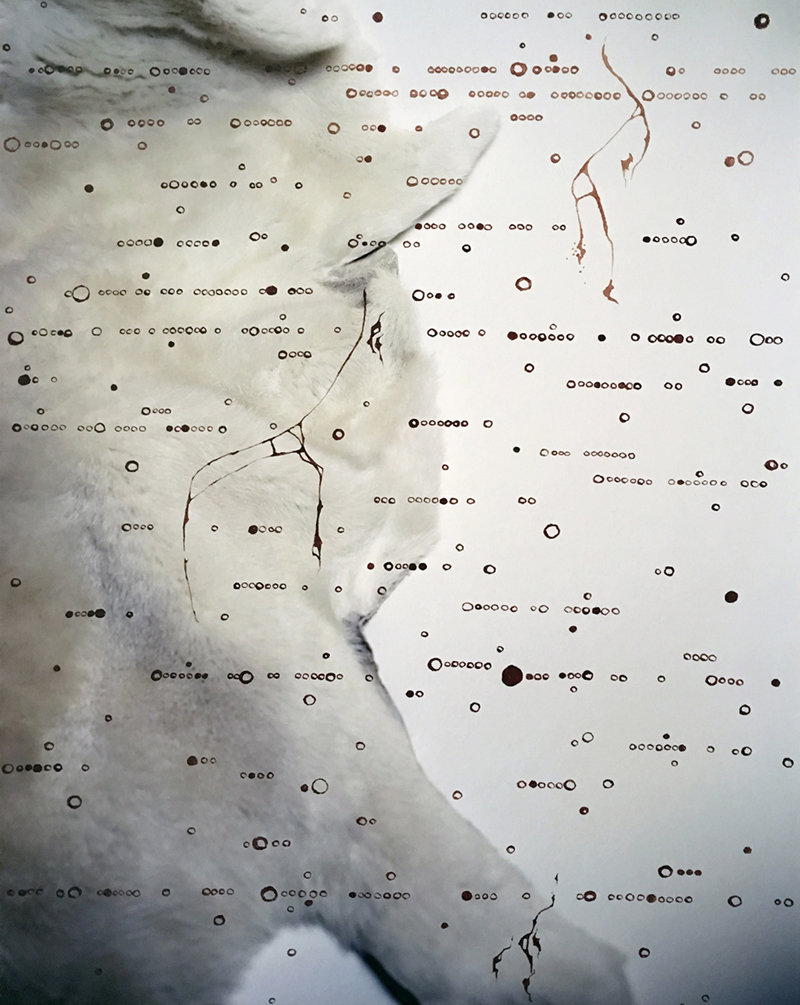
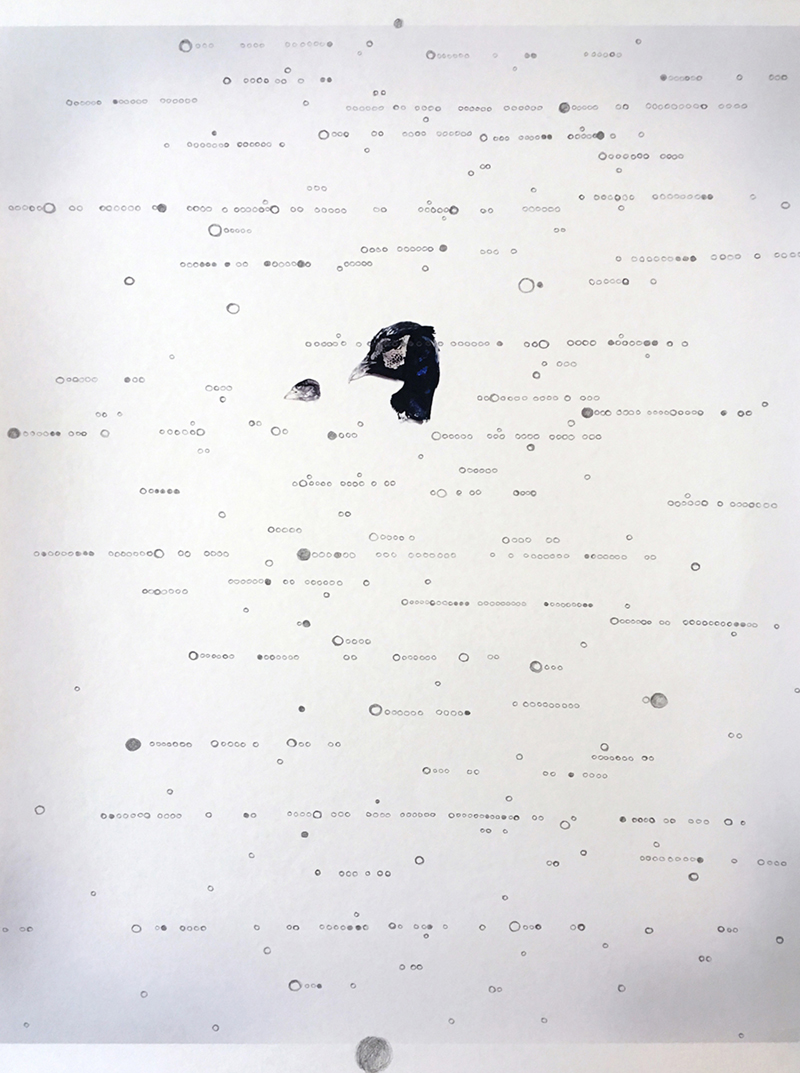

Archetypal
Here, accompanying mythological references, I work primarily with my own blood, with “plant
blood”-chlorophyll—and with pen and pencil. Working in a rhythmic meditation and repetition onto the image itself; I make writing-like marks and drawings directly onto my photographs. I try to bring to the forefront the contrast between our invisible and more physical daily existence. This contrast makes up the majesty that is our bio-historical experience.
The references are like remnants kept loose to the extreme; that nebula is the state in which these creatures have entered our current era. Utilizing the language of Myth is a major method of solving our problems while we wade through this Thing called Life.
As it permeates like a ghost or a distant echo of our very origins, so do these bones and artifacts speak to the idea that this can never quite leave our instinctual artillery of survival-tools.
Writing addresses a language —not verbal; it is a language that all life shares. I cannot pin
down what that may be, but blood, a life-giving-material to me is a good place to begin.


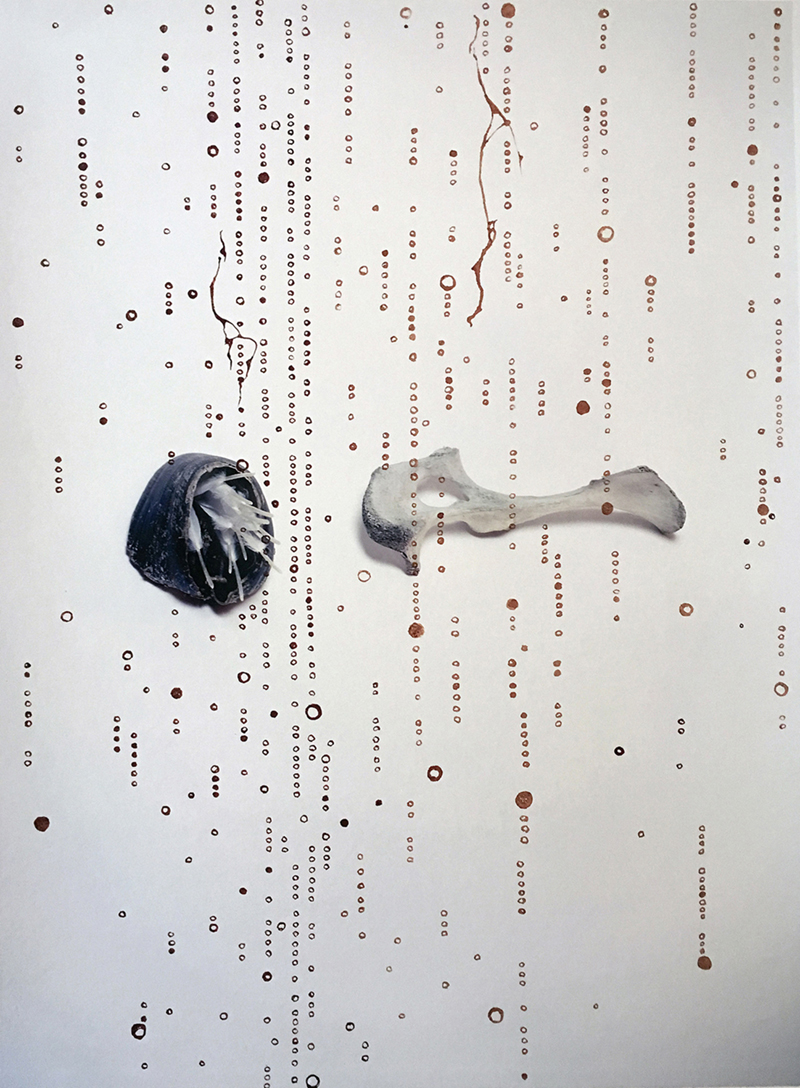
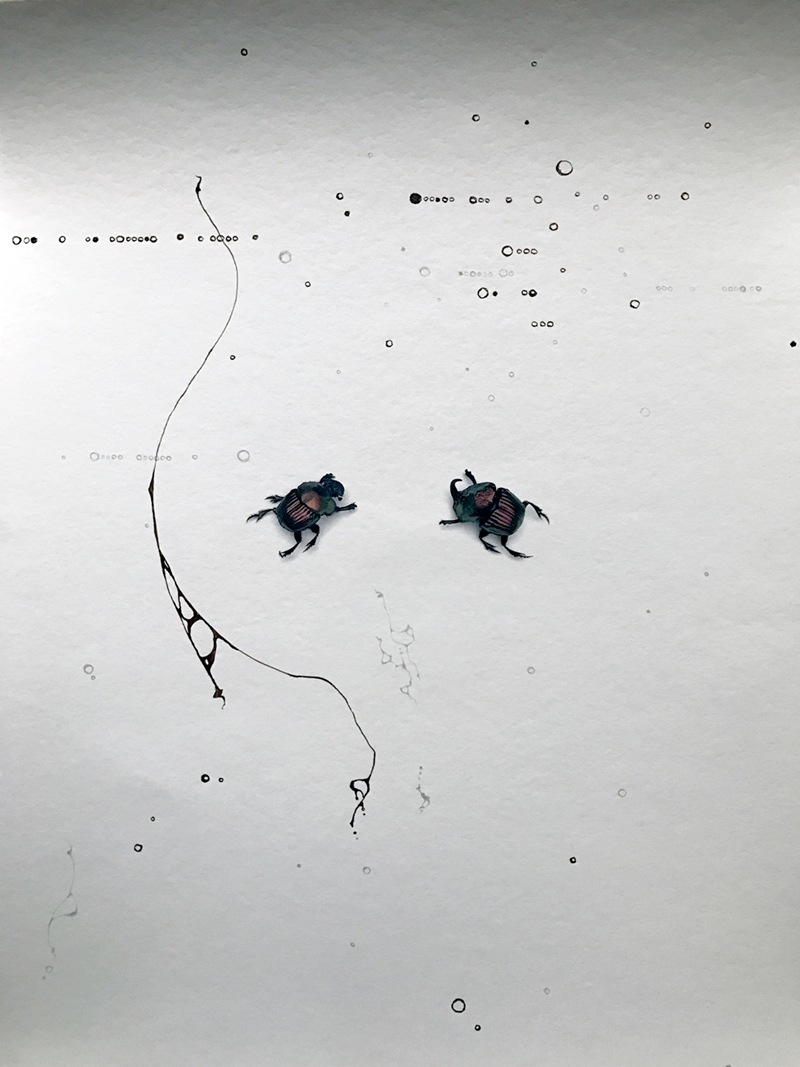

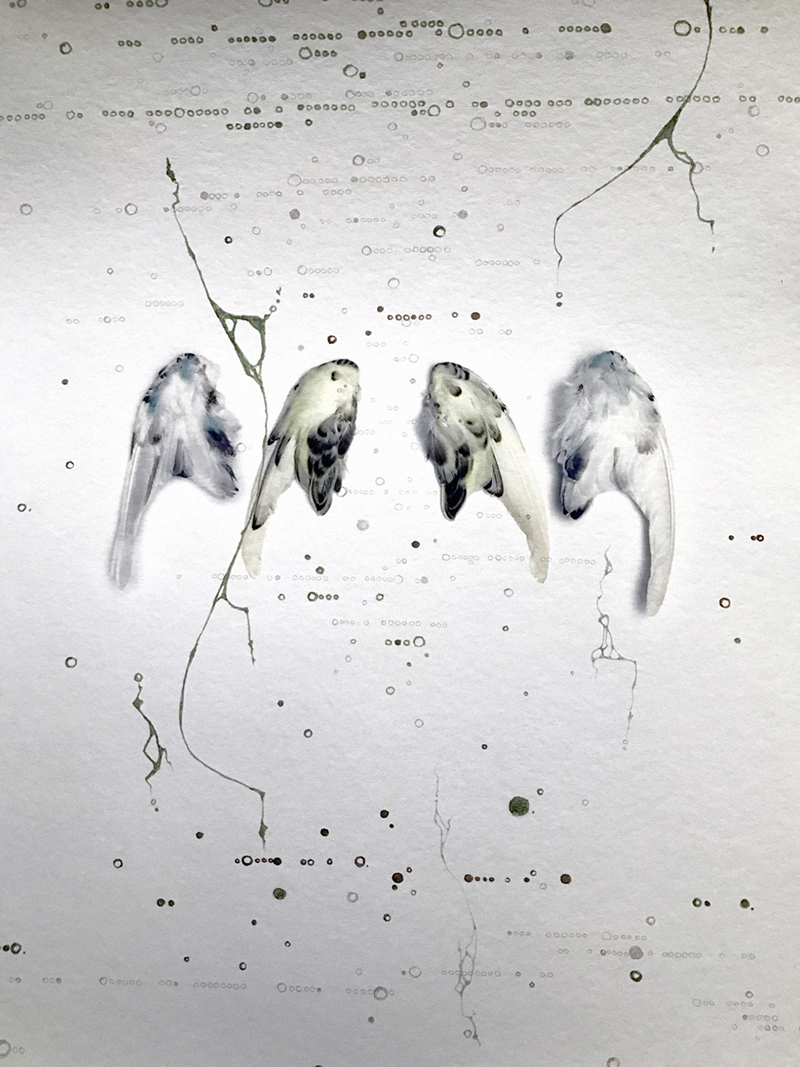
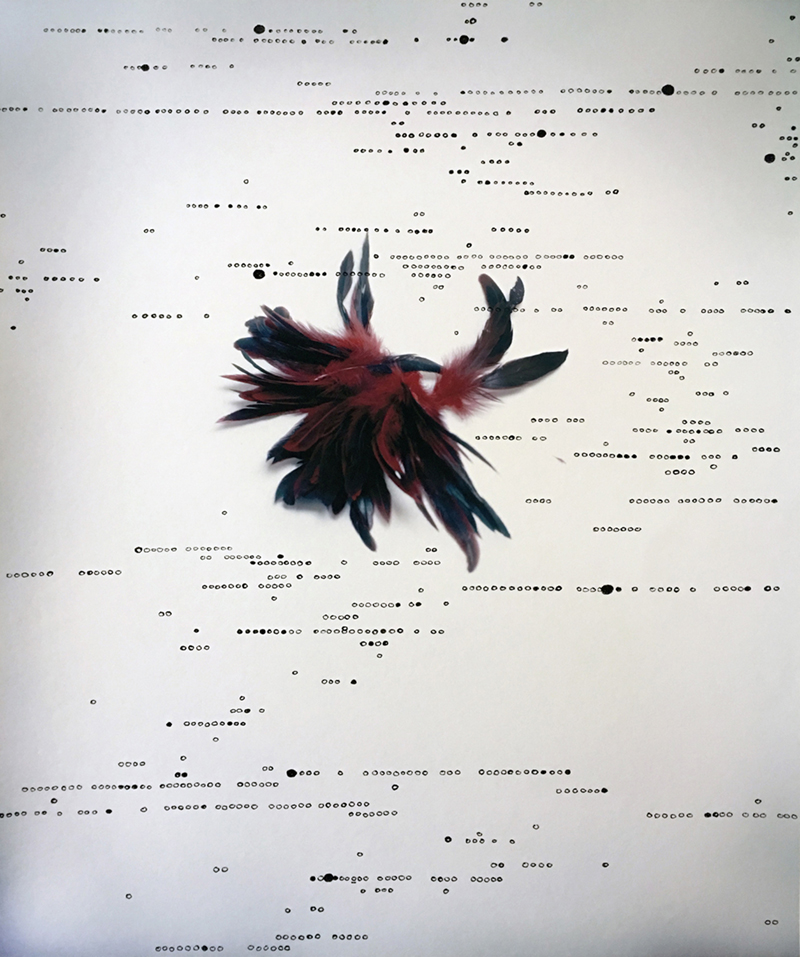
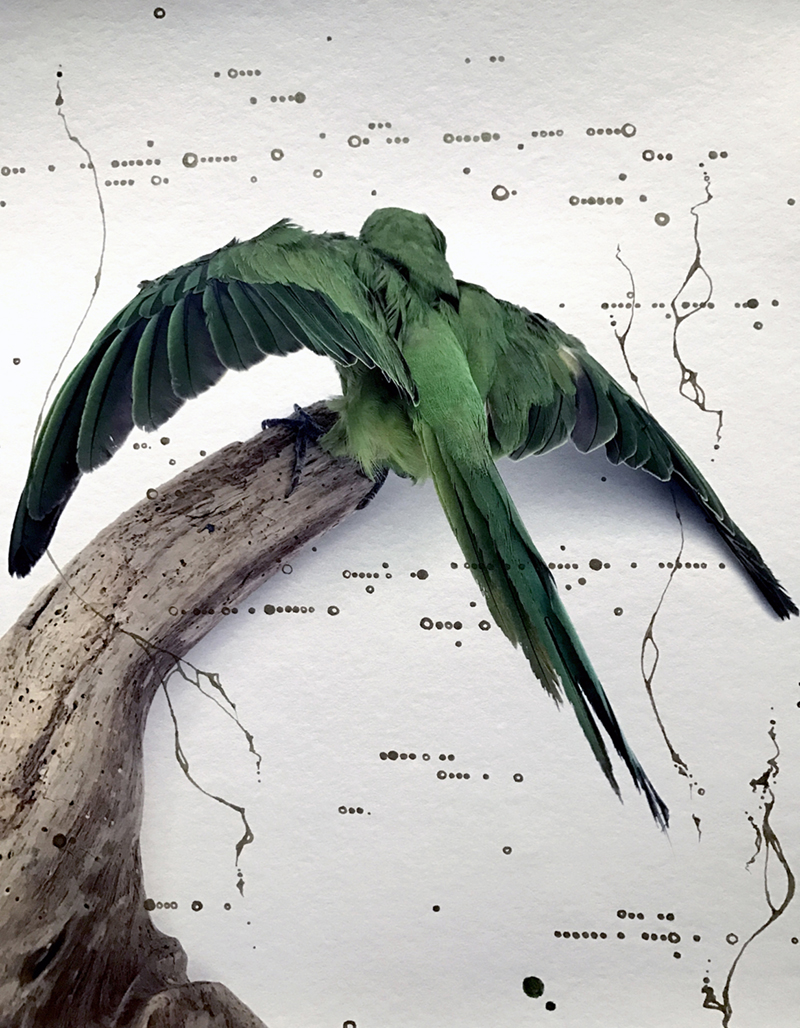
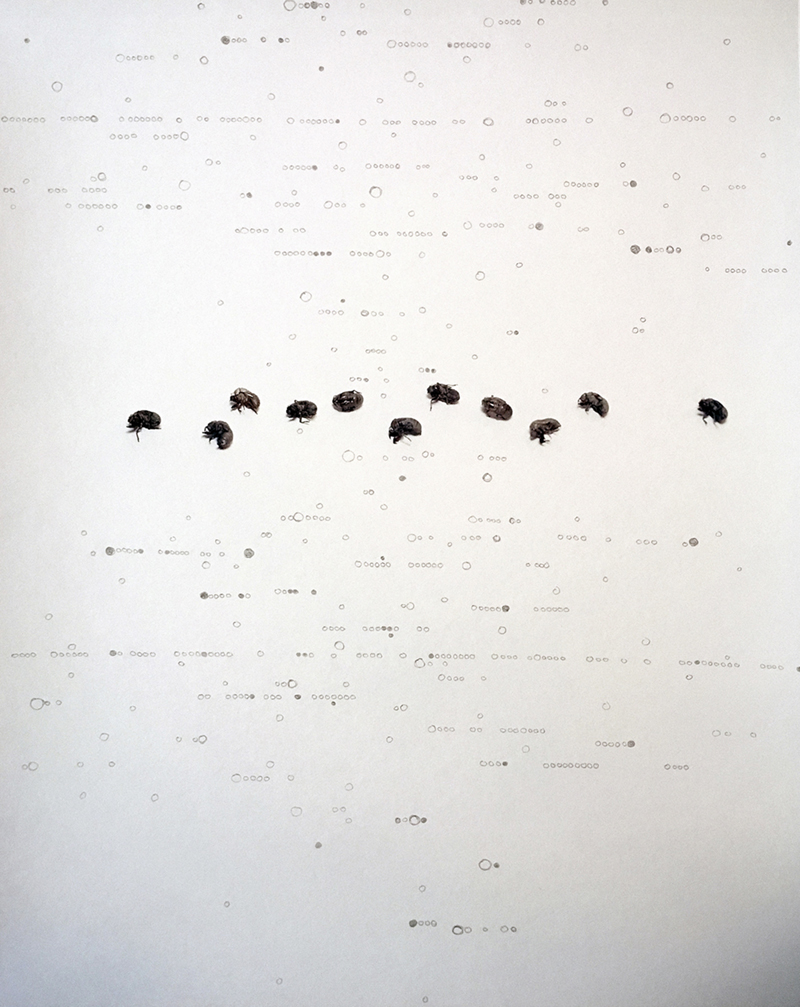
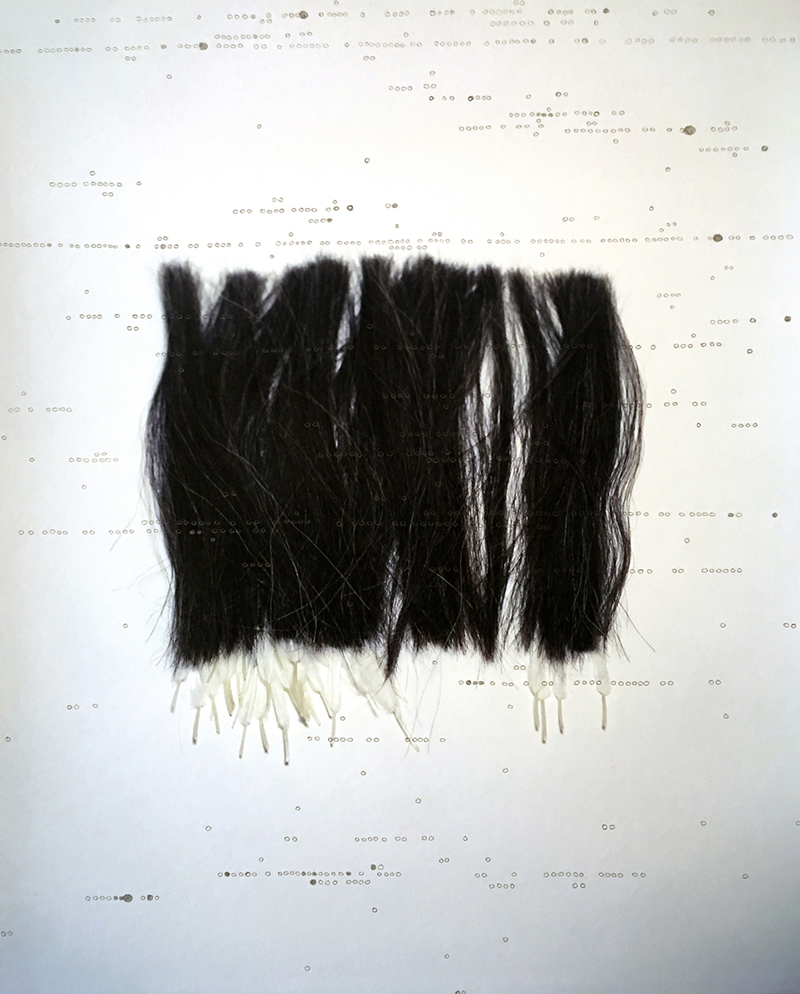
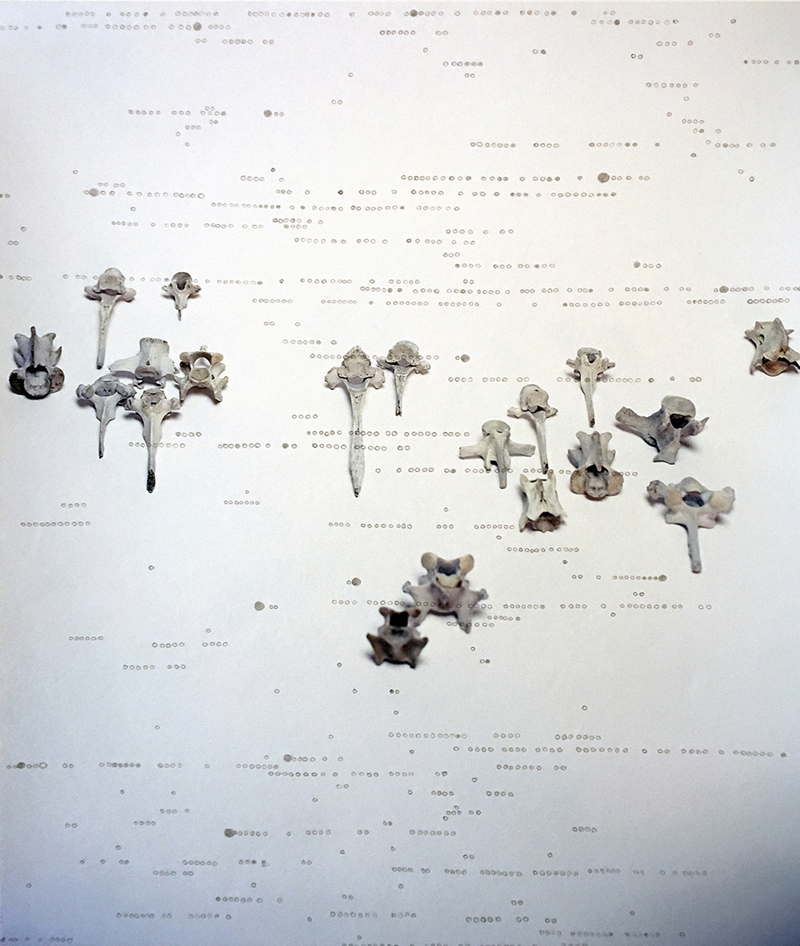
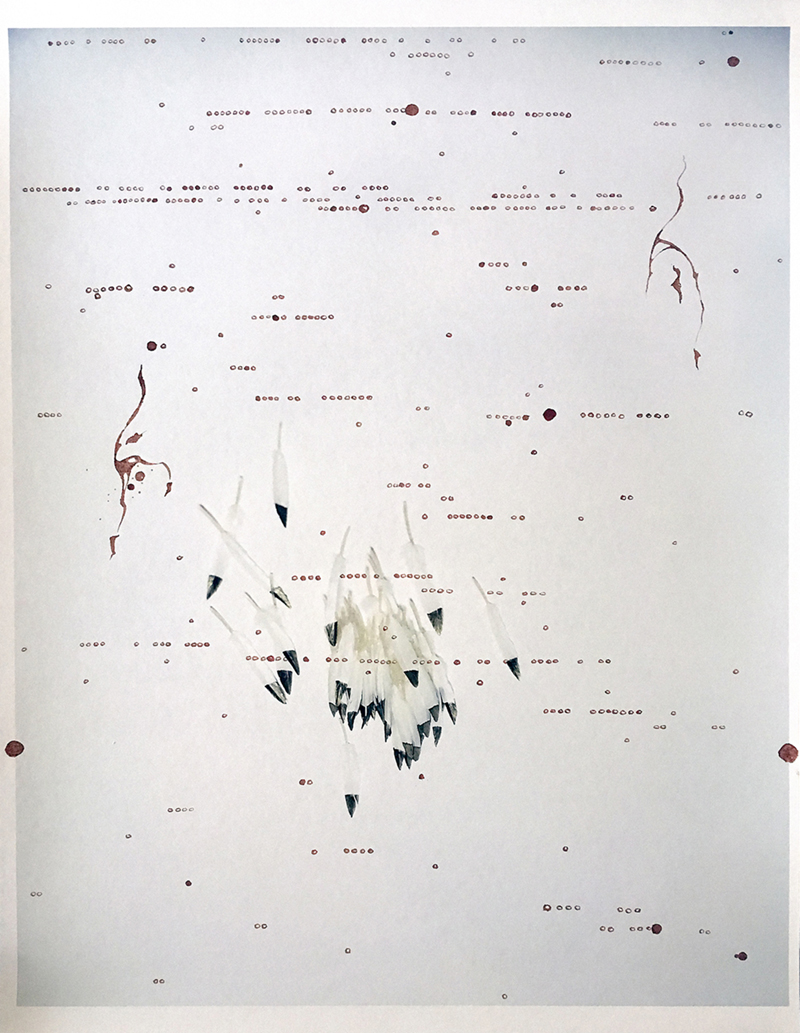
To view more of Tara Cronin’s work please visit their website.